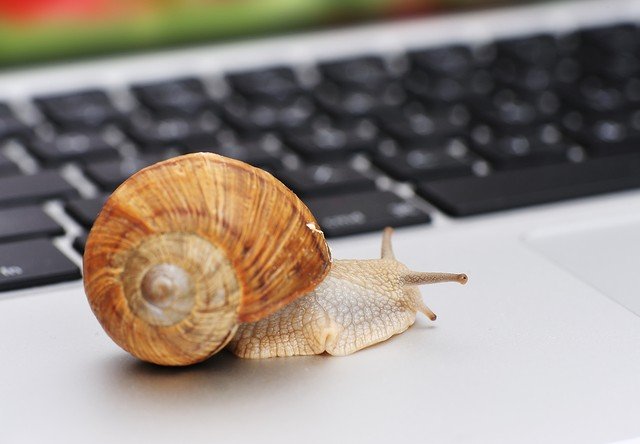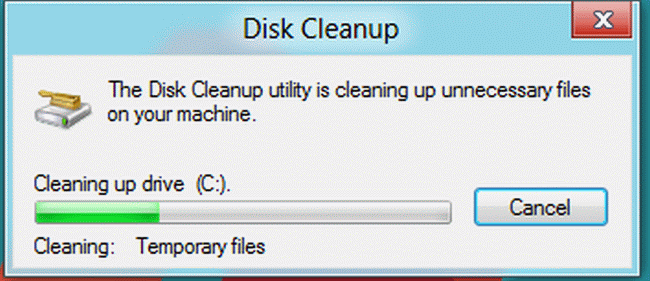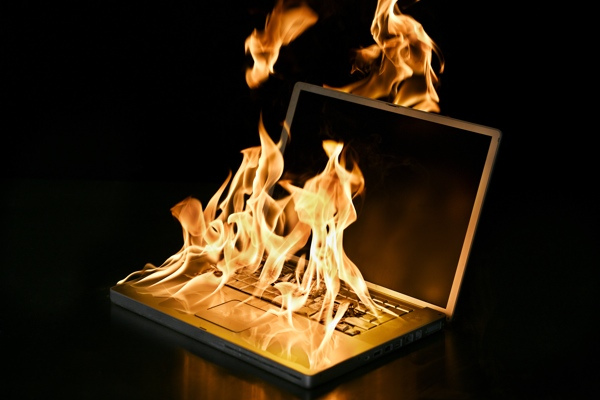fix slow computer errors on Windows 10/8 / 8.1 / 7 and Windows XP
After a long time using the computer, you realize that your computer is running more and more slowly, unstable, the process of starting 'lumbering', even it takes even an hour to start up. processing even the smallest applications takes a lot of time . At times like that you just want to smash your computer to finish.
The cause of the slow running of the computer may be due to software or hardware failure. In the article below will guide you the tips to fix slow computer errors, help the computer run faster.

Here's how to fix slow computers in the article:
- 1. Remove unnecessary Startup programs
- 2. Use programs and applications instead
- 3. Check for errors on the hard drive
- 4. Disable unnecessary Visual Effects
- 6. Do not run too many applications, anti-virus programs
- 7. Disable Sound Schemes
- 8. Delete the temporary files (Temporary File)
- 9. Disable Search Indexing service
- 10. Update Windows and make sure you are using the latest hardware driver version
- 11. Check Device Manager to 'search for' hardware conflicts
- 12. Change the Power scheme to High Performance
- 13. Never let your computer "overheat"
- 14. Upgrade RAM
- 15. Check for spyware (spyware) and malware (malware)
- 16. Empty trash
- 17. Defragment hard drive
- 18. Delete unused files
- 19. Repair Registry errors
- 20. Repair and protect Windows system files
1. Remove unnecessary Startup programs
Startup programs are operating system programs that automatically run when the computer boots up. Not only are these programs slowing down your Windows computer, they can run continuously until you close them manually. Such a continuous running process will consume system resources (CPU and RAM) on your computer. So if you want your computer to start faster, smoother, and also help 'consume' system resources, it's best to disable unnecessary startup programs.
To disable unnecessary startup programs, follow the steps below:
First, type msconfig in the Search box on the Start Menu (with Windows 10, Windows 7 and Windows Vista) or on the Start Screen (with Windows 8 and Windows 8.1).
On Windows XP, open a Run command window, and then type msconfig into the Run command window.
At this time, the System Configuration utility window appears. Here, click the Startup tab , then disable all unnecessary applications.
Next restart your computer to apply the changes. Note that security programs should not be disabled to protect your computer in "safe" state at all times.
2. Use programs and applications instead

If you're using programs and applications that require a lot of "computing power" to work, it's best to replace them with "lighter" apps and programs. Faster and smoother. Such as:
- Replace applications, antivirus programs with Microsoft Security Essentials.
- Microsoft Office can be replaced with OpenOffice, WPS Office.
- Adobe Reader can be replaced with Foxit Reader for free.
- New versions of Internet Explorer, Chrome and Firefox always consume less resources, run better…. Therefore, if you are using the old version, it is best to update and replace the old version with the new version to use.
3. Check for errors on the hard drive
After a long time of using, it is likely that your hard drive will get some errors and this affects your computer's performance. In this case, the best way is to use the Disk Check utility built into the Windows version to fix the error.
First open Command Prompt under Admin , then enter the command chkdsk / r into it. You will now receive a message asking you to restart your computer. Click Y to reboot your computer.
The chkdsk / r command will scan the hard drive on your computer to detect errors and restore data that the utility can read. The process takes place quickly or slowly depending on the size of your hard drive.
4. Disable unnecessary Visual Effects
Visual effects make your computer look better, but this is also the reason why your computer is slowing down. Therefore to make the computer run smoother, the performance is faster than the best is to disable all Visual Effect.

To disable Visual effects, follow the steps below:
- Press the Windows + R key combination to open the Run command window.
- Enter the command sysdm.cpl in the Run window.
- At this time, a new window appears. Here, click the Advanced tab , then click Settings in the Performance section .
- In Section Adjust for best performance , choose the style hit the visual area and the theme you want to use.
- Click Apply to apply the changes.
Disabling Visual effects can significantly improve your system performance, especially if you are using Windows 7 or Windows Vista and are using the Aero interface without a graphics card.
6. Do not run too many applications, anti-virus programs
Did you know that anti-virus applications and programs take up a very large portion of your system's resources, and this is also one of the reasons why your computer is slowing down. So the advice for you is to choose and use the best anti-virus software, application to ensure the performance of your computer is improved and frees up more hard drive space.
7. Disable Sound Schemes
Every time you perform an action on the Windows computer, it will make a sound to notify you. Although this feature is quite good and useful for users, but in the long run this feature will make your computer slow down. In order for your computer to operate with better performance, you should disable this alarm sound.
To disable the Sound schemes, first open the Control Panel , then click on Sounds , or alternatively open the Run command window and enter mmsys.cpl into it.
On the next window, click the Sound tab , then click No Sounds from the Sounds scheme dropdown menu and then click Apply to apply the changes.
8. Delete the temporary files (Temporary File)
Temporary files are stored on your computer during Windows operation. Temporary files include log files, browsing history, cookies and files in the "temporary internet files" folder.

After a long time of use, these files will become increasingly full, and take up disk space on your system, so you must proceed to "clean" these files away.
You can use CCleaner or use the Windows Disk Cleanup utility built into Windows to clean these files.
Open the Windows Disk Cleanup utility by opening the Run command window, then type cleanmgr.exe and press Enter .
Also you can create specific scan schedules for Disk Cleanup to automatically delete files.
9. Disable Search Indexing service
Search Indexing Service (Search Indexing Service) on Windows scans all files and folders on your system and stores information on the database for users to search faster.
Many users will wonder that Service Indexing is a good service, but why disable it. The simple reason is that when Search Indexing is running, the service will slow down the system speed. In addition, this service consumes quite a lot of caching (pagefile) as well as 'CPU time and effort'.
To disable the Search Index service, follow the steps below:
First open the Run command window, then enter services.msc into it. In the window that appears on the screen, in the right pane find and double-click on the Windows Search service .
On the Properties window, click the Genearal tab , then at the Startup type, click Disable and then click OK to save the changes.
Restart your computer. From now on the search process on your computer will be a bit slow but in return your computer will work faster.
10. Update Windows and make sure you are using the latest hardware driver version
The latest versions of Windows always include the most complete new features, and the vulnerabilities or hardware bugs on previous versions are also fixed. Therefore, you should regularly update (update) the latest version of Windows to use, both to experience new features and fix hardware errors to improve your system performance.
Also when using the latest version of Windows also ensures your system security higher, more secure.
11. Check Device Manager to 'search for' hardware conflicts
Open the Device Manager window to check if all connected hardware is working properly? If you find any hardware conflicts, take steps to fix them. If the problem cannot be fixed, the simplest solution is to disconnect the problematic hardware until you find a reasonable solution that will fix the problem.
12. Change the Power scheme to High Performance
If you are using a laptop and you notice that your laptop is running quite slowly, then you can change the Power scheme to High Performance (maximum speed) to improve system speed.
Note that when in High Performance mode, the system will run at full capacity, and the speed will be the fastest, but will also consume the most battery.
To change the Power scheme, open Power Options on the Control Panel, then click on High Performance .
Also on Windows 7, Windows 8 / 8.1 and Windows 10 you can open Power Options directly by entering Power Options in the Search box on the Start Menu or Start Screen.
13. Never let your computer "overheat"

If your computer "overheats" will cause many problems that you cannot anticipate. When the computer is hot, the processor will slow down, resulting in slower computer performance over time.
The best way to prevent your computer from overheating is to use a heat sink, cooling fan.
14. Upgrade RAM
RAM, also known as Random Access Memory, is home to all the files of programs running on the computer. Accessing files from RAM is much faster than accessing from hard drives.
This means that if the amount of RAM is more, even though many programs running on the system will not affect the speed of operation of the system. Upgrading RAM is also not too expensive, and this is also one of the best ways to speed up your 'turtle-like' computer speed.
15. Check for spyware (spyware) and malware (malware)
Because the majority of computer users often surf the web, chat online and email, the computer is easily infected with spyware and malware from various websites you visit. By removing spyware and malware, your computer speed will be increased significantly.
According to Microsoft, the best way to protect your computer from spyware is to first use a free service called PC Safety Scan scanned from Windows Live OneCare to check for viruses and remove them.
You can also download Microsoft Security Essentials (free) to protect your computer from viruses, spyware, adware and other things that slow down the performance of your system. Or if you are using Windows 7, Windows Vista, Windows XP and Windows 2000, you can use the Microsoft Windows Malicious Software Removal Tool.
16. Empty trash
The 'Empty Recycle Bin' operation is very simple but quite effective. Letting the trash store a large amount of data also contributes to slow performance of the computer because this is a Windows file system, so when operating it will be 'looked' over, 'garbage' as much as possible. The system will be more burdensome.
17. Defragment hard drive
Fragmentation of files on your computer can make your computer slow down because it takes longer time to "find" all the necessary files. To avoid this, you can defragment your computer yourself. If you use Windows XP / Vista / 7, you can follow these instructions (note that all open programs must be closed before doing this):
Go to My Computer > right-click the operating system installation drive (usually drive C ) and select Properties . On the window that appears, select the Tools tab > click Defragment Now . Then click Defragment . While the program is running, you should not use the computer. The time it takes to run the defragmentation process depends on the size of the hard drive and the number of fragments.
18. Delete unused files
Thoroughly check everything on your computer, first the desktop, clean and delete programs and files you never use. This will create some extra disk space on your hard drive, and help the computer run faster.
If you don't want to delete lots of pictures and music files that slow down your computer, it's best to buy an external hard drive to store these items. That way you can keep your favorite files without having to suffer from a slow computer. Finally, you can use the tool available in windwos called Disk Cleanup to identify temporary Internet files as well as other junk files and delete them to increase hard disk space.
19. Repair Registry errors
Another cause that contributes to the decrease in computer performance is errors in the registry. You can download a free program like Registry Easy to scan and fix these errors, which will increase your computer's productivity.
20. Repair and protect Windows system files
During computer use, there will be one or more system files damaged or errors that can affect the performance of the system. Therefore, checking all system files is necessary and important.
The best way to check files on your operating system is through the System File Checker. To run the System File Checker, open Command Prompt under Admin then type sfc / scannow into it.
The sfc / scannow command will check all system files, detect corrupted files or files that need to be corrected and replace corrupted files with original files. This process will take about 5 to 15 minutes, but it may take longer if your computer is infected by a virus.
 How to use SpeedFan to check CPU temperature, fan speed, computer
How to use SpeedFan to check CPU temperature, fan speed, computer How to free up hard drive space with CompactGUI
How to free up hard drive space with CompactGUI How to use Clean Space to clean the computer
How to use Clean Space to clean the computer 4 bad sectors checking and fixing software on SSDs for free
4 bad sectors checking and fixing software on SSDs for free Instructions for speeding up virtual machines in full set
Instructions for speeding up virtual machines in full set 5 customizations on Windows 10 make the game more 'smooth'
5 customizations on Windows 10 make the game more 'smooth'